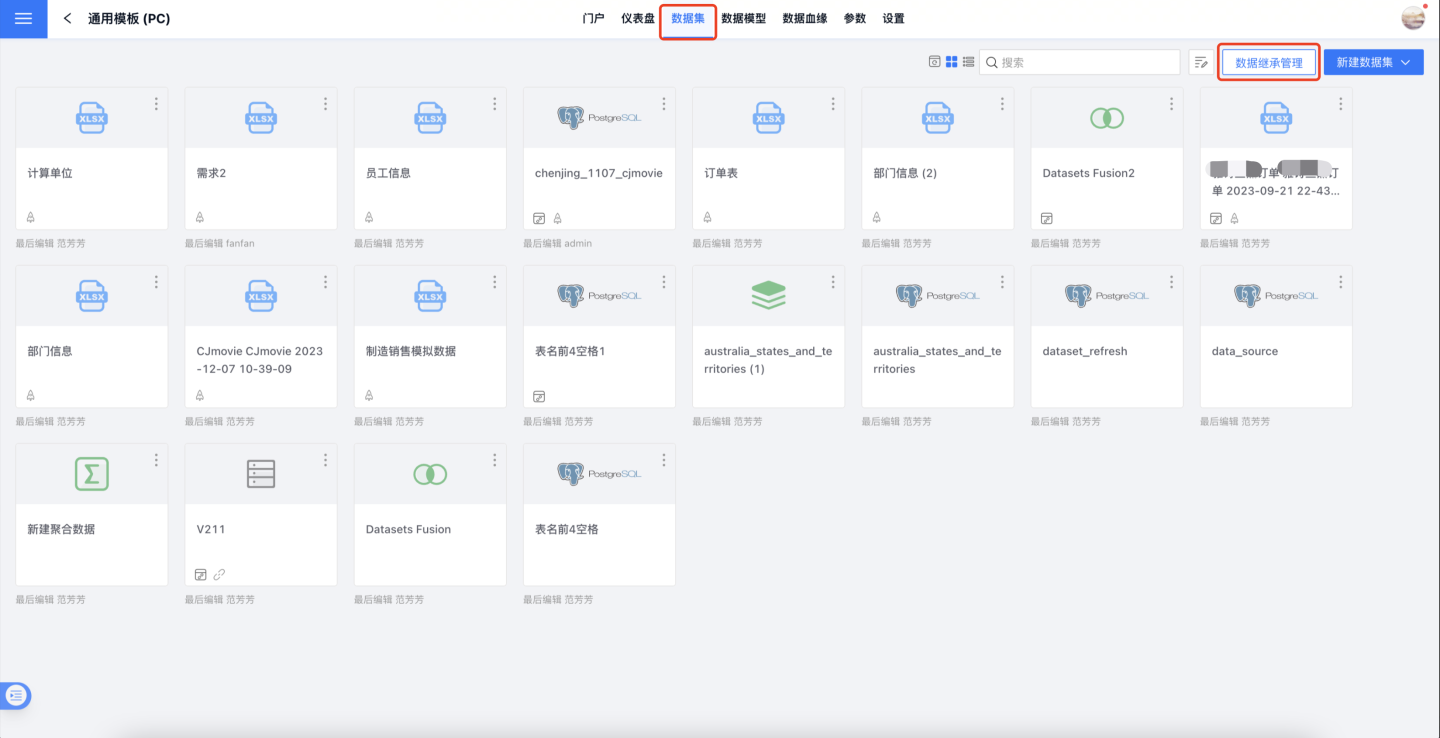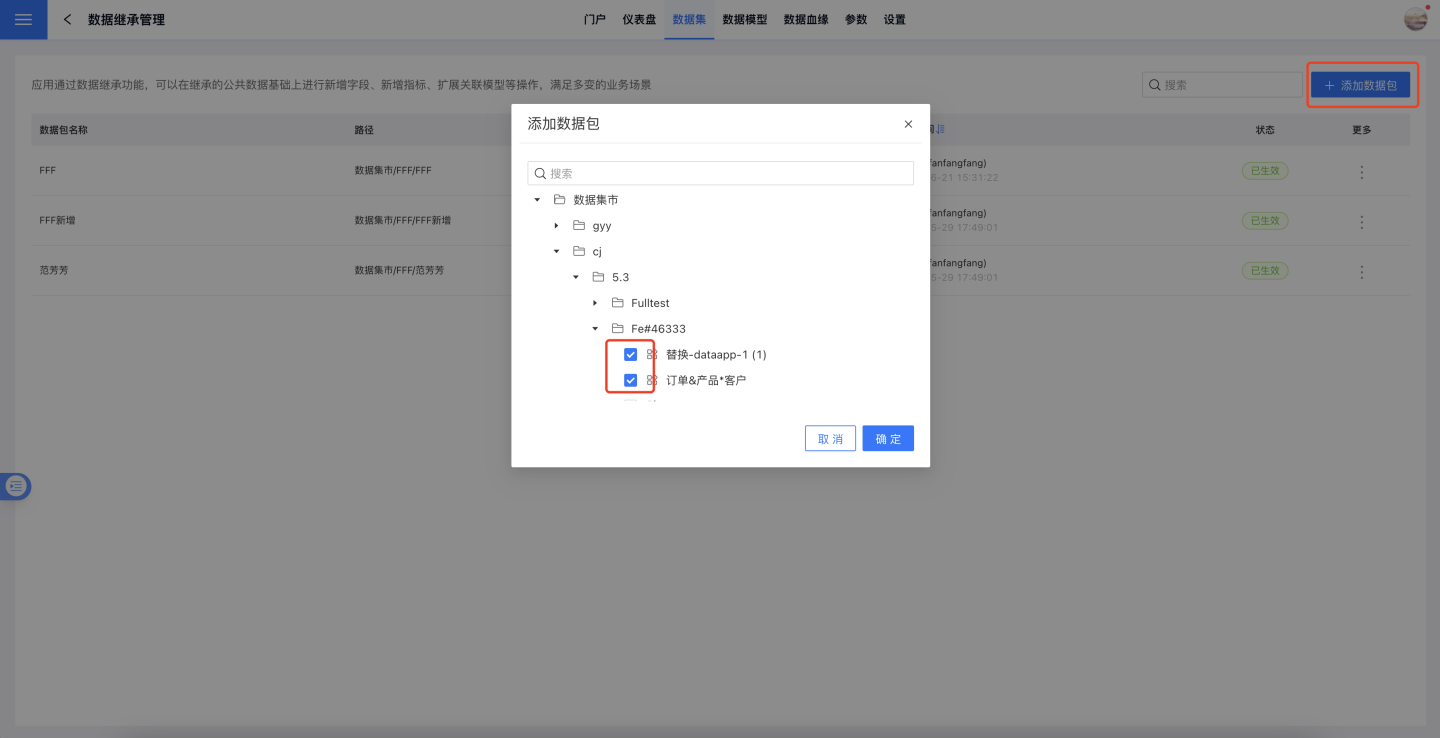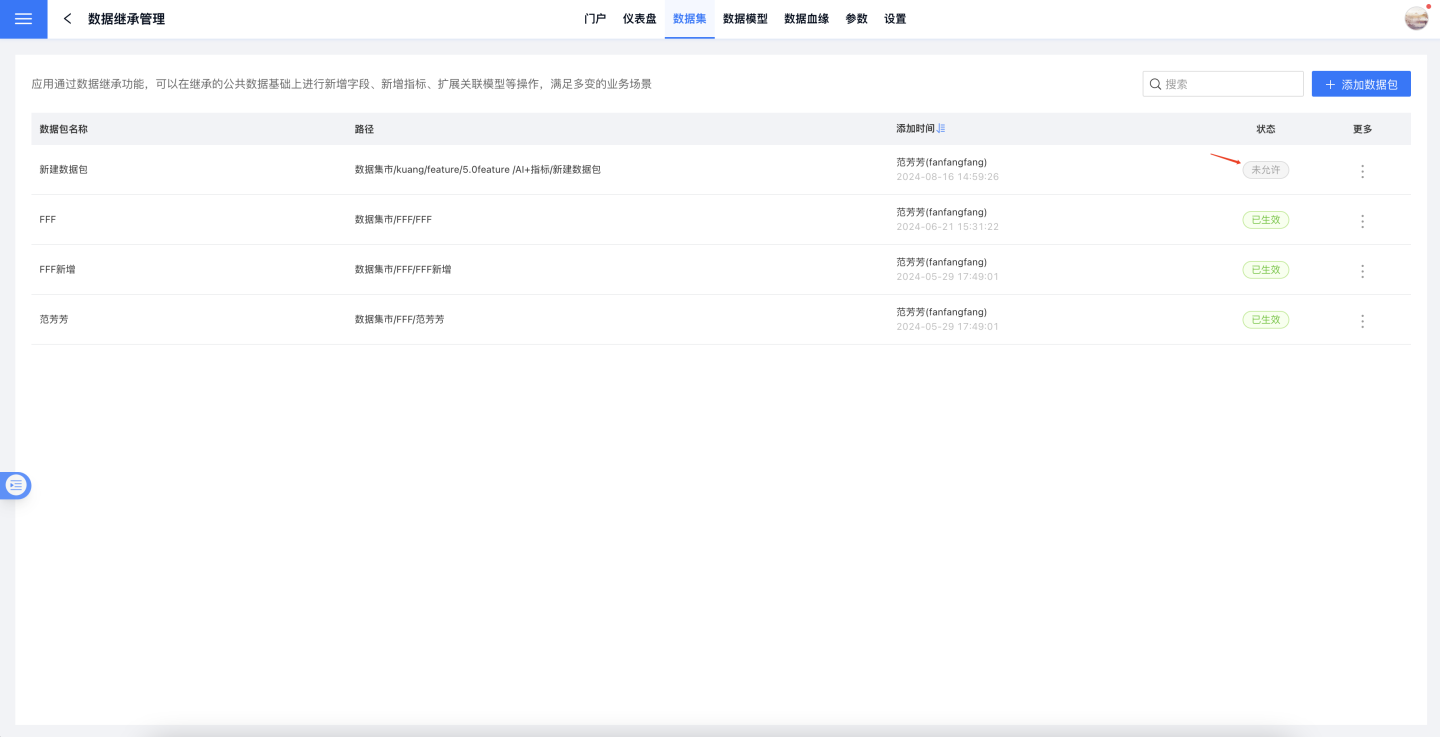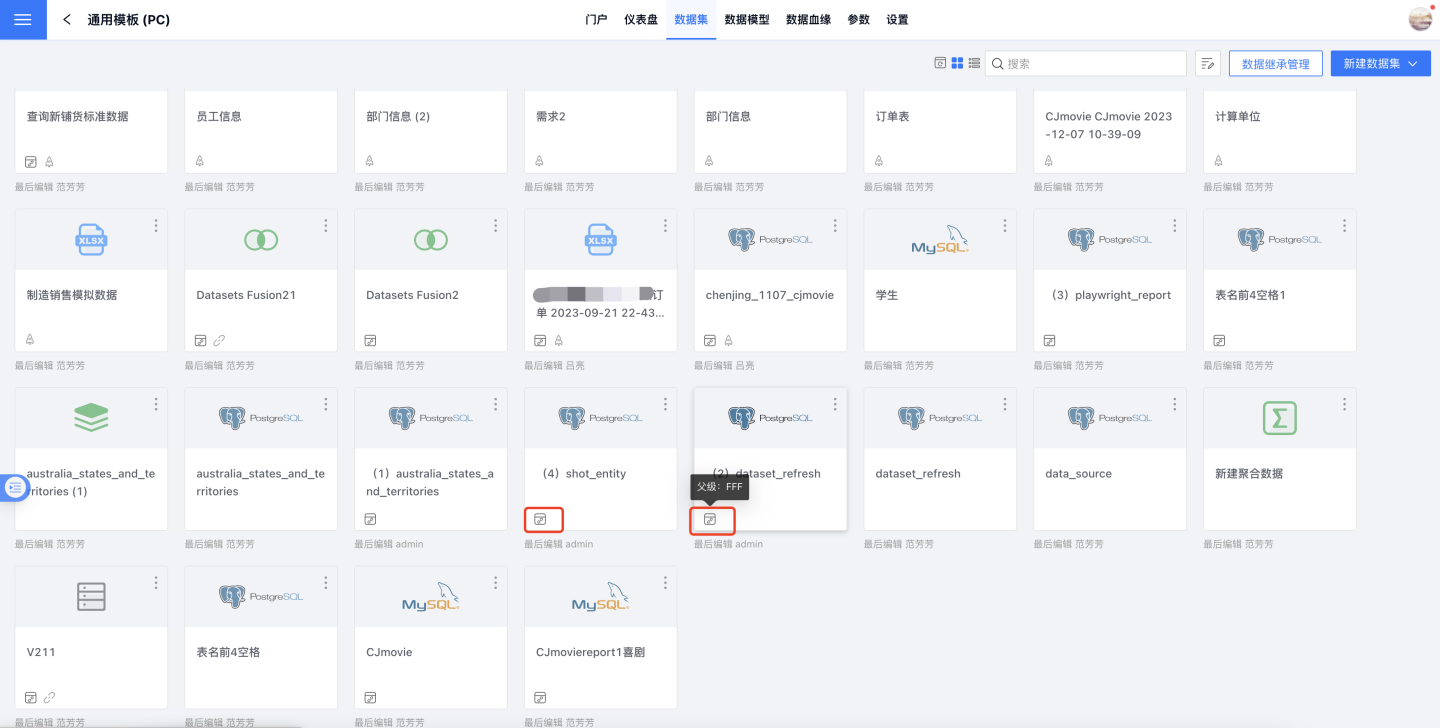Dataset Inheritance
Dataset inheritance refers to the datasets that inherit data packages from the data mart. The data mart hosts the organization's public foundational data, providing basic analytical data for different business analysis needs. Therefore, data packages in the data mart are generally not customized for specific analysis scenarios; their usage is relatively generic. Business analysis, however, is often conducted for specific scenarios, with data, models, parameters, and indicators tailored to those needs. This requires processing the foundational data. Consequently, the data mart has added an inheritance feature, allowing analysts to inherit data packages during application creation.
By inheriting data packages, applications can not only use the datasets and data models from the packages as they are but also extend them through adding new fields, new indicators, new datasets, and expanding associated models, thereby meeting the flexible and varied demands of indicator analysis.
How to Apply for Dataset Inheritance
Add a data package in Application -> Dataset -> Dataset Inheritance Management, selecting the data package from the data mart that needs to be inherited.


After adding the data package to be inherited, the status is set to "Allowed," and an application has been sent to the data package manager.

Once the data package manager approves, the status changes to "Effective." The applicant can view the inherited dataset in the dataset. The inherited dataset is marked, and hovering the mouse over it will display the parent data package from which it originates.

Successful addition of the inherited data means the data information from the corresponding data package, including parameters and models, is inherited into the application, allowing users to conduct analysis on this basis.
Removing Inherited Data Packages
When an inherited data package is no longer needed, it can be removed in Application -> Dataset -> Dataset Inheritance Management. Charts, derived datasets, parameters, and newly created fields made from the inherited dataset will become unusable.
If the inherited data package is added again, previously created charts, derived datasets, parameters, and newly created fields can continue to be used.
Notes on Dataset Inheritance
- Inheriting data means inheriting all data from a data package, including datasets, parameters, and data models. It is not possible to inherit only a single dataset.
- Inherited data is in read-only status, and the original content cannot be changed, only new content can be added, including:
- Existing fields, metrics, and parameters in the inherited dataset cannot be deleted, but new fields, metrics, and parameters can be added. The original field groups, metric groups, etc., cannot be modified, but new fields and metrics can be grouped.
- Public dictionaries and acceleration engines cannot be enabled for inherited datasets.
- The modeling relationships of inherited datasets cannot be modified, but new relationships can be added.
- Inherited datasets do not support copying, deleting, renaming, replacing, or editing datasets.
- Inherited datasets support exporting datasets.
- Inherited datasets can derive new datasets, such as Fusion datasets, Aggregate datasets, and Union datasets, and can establish new data models.
- When an application contains inherited datasets, the application (application creation and application marketplace) does not support exporting templates.
- When the inherited data package is deleted, the inherited datasets in the application disappear, and charts made using the inherited datasets will report errors.
- Tenants can inherit data packages shared by the platform, and can refer to the methods in this article to apply. After applying, they need to notify the platform to approve the tenant's application.